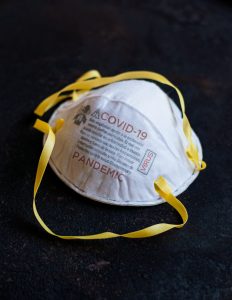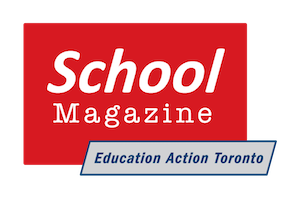Re-opening schools in September – many loaded questions
It may come as a surprise to some, but kids aren’t necessarily predisposed to the nuances of social distancing. They don’t readily gauge that 2 m gap they’re supposed to keep between themselves and others while they’re running around the yard. They get runny noses and don’t necessarily wash their hands. They can easily be distracted from the overall purpose of rules – especially new ones- and aren’t always compliant or even all that co-operative. They’ve been away from their friends for months and have loads of pent-up energy.
The critical balance
In just over a month, roughly 2 million Ontario students may get ready to return to school after 6 months away from the classroom. But, in the light of COVID-19, it’s not at all clear how a safe return will work. There are a lot of factors in play, but the overriding one is money. If the Ford government wants students and education workers to have a safe return to school, it needs to tell Ontarians how much money it will pony up to make that happen.
Back in June, the Ministry of Education told school boards across the province to create contingency plans for re-opening schools in the Fall. It told them “it is critical to balance the risk of direct infection and transmission of COVID-19 in children with the impact of school closures on their physical and mental health” and advised them to sort that out, somehow, by August 4. It told school boards across the province to plan for 3 different schedule options:
-
normal school day routine
-
modified school day routine based on smaller class sizes of 15 and alternative day or week delivery
-
at-home learning
Most of the Ministry’s direction went to the “modified school day” with class groups of 15 students who would only interact with their teacher and their classmates.
So far, this has meant that boards have been trying to work out plans that include both full-time school and part-time attendance linked to curriculum work done with classmates, according to the Ministry, under “a range of timetabling models.” Online -at home- learning is still on the table.
The Ministry offered some vague tips on adapting the “school environment” – putting bits of tape on the floor, like they do at supermarkets, to mark off social distances, “visual cues”, limiting visitors and putting up signs to show students steps for entering and exiting their schools. There hasn’t been a lot of solid direction there.
Announcements have been confusing. By July 9th, school board directors of education had been told by their association to avoid online learning and keep students in classrooms, according to CBC news. Education Minister Stephen Lecce said in a press announcement that day, his government preferred a return to full time in-class teaching, but that he was still leaving options open in case there are any changes to rates of COVID-19 exposure. Last Monday, Premier Doug Ford set the tone: “Let me be clear, I want to see every child in Ontario back to school, full-time, this September.”
The TDSB draft plan
The Toronto District School Board, like others across the province is actually trying to get into the nitty gritty of the Ministry’s pronouncements and released a report this past Wednesday.
Money-wise, it’s already pitching from behind, because for the 4 months that student have been  off school it has either lost or had to pay out $22.5 million for Health and Safety department increases, caretaking supplies as well as revenue from international students and permits. To get through the first 4 months of school this Fall, it will need to spend an extra $1.5 million on Personal Protective Equipment (PPE); $4.5 million on additional cleaning/ sanitizing; $9.8 million for students needing technology, special education supports as well as staff training. These expenses coincide with another revenue loss of $6.7 million. It is not pretty.
off school it has either lost or had to pay out $22.5 million for Health and Safety department increases, caretaking supplies as well as revenue from international students and permits. To get through the first 4 months of school this Fall, it will need to spend an extra $1.5 million on Personal Protective Equipment (PPE); $4.5 million on additional cleaning/ sanitizing; $9.8 million for students needing technology, special education supports as well as staff training. These expenses coincide with another revenue loss of $6.7 million. It is not pretty.
For the TDSB to meet the Ministry’s latest wishes of 5 days per week, face to face instruction with groups of 15 students in a class, here are some of the features of the elementary school plan:
-
Teachers would cover all subjects
-
No Core French, Extended French or French Immersion
-
There may be many combined grade classes
-
School might have to use alternate sites including community centres and other municipal buildings
-
All centrally assigned teachers would be assigned a group of 15 students
There are variations on this theme including one with full class sizes and early dismissal of 48 minutes.
The Board has also presented another model that involves 3 days face-to- face with the teacher and 2 days off. Students who are off school would do schoolwork on their own and have lessons and check-ins online by another teacher. It is very confusing and would probably go the way of online learning from the last months of school.
For secondary students, the TDSB doesn’t offer a full day program for next Fall; instead they would go to school part-time and spend the rest of the day, hopefully, learning at home. The school year would be divided into 4 “quadmesters.” Students would complete 2 courses per “quad.” There would be an in-school teacher responsible for each course and somehow, this person would provide support for students with special needs, student success initiatives, small group learning, and extra-curricular activities, to mention a few items.
The TDSB plan includes full-time remote learning – a combination of online instruction and self-directed learning- for both elementary and secondary panels.
Classes will still be open for high needs Special Education students and the TDSB expects Individual Education Plans (IEPs) along with special education team meetings and Identification Placement and Review Committee (IPRC) meetings to carry on.

The TDSB also has different plans for Before and After School programs similar to the ones offered for other school programs that vary between full-time and those with smaller groups. But there’s too little information yet to get much of an idea what will happen. The same is true for EarlyON Child and Family Programs that need the go-ahead from Toronto Public Health and or Children’s Services to be implemented.
Transportation is another can of worms that depends on the Ministry’s restrictions to the number of kids who can be together as well as the bus operators’ own restrictions on bus drivers and their ability to stagger schedules, clean buses, and provide proper PPE and hand sanitizers for all people riding on them.
For Adult Day School students, like those in secondary schools, the school year would be divided up into 4 “quadmesters.” Adult students would attend school every 6 days during which time they would get 240 minutes of instruction and access to their teachers.
Health and safety plan
The enormity of the task of re-opening schools is boggling when you think about a bunch of kids gathered together in a relatively small space, told to keep 2 metres apart. That alone tells the story. The Board offers many pointed recommendations for schools; here are a few of them:
- Staggered arrival and dismissal times
- Capacity limits for washrooms and other common areas
- No assemblies or other gatherings
- Handwashing breaks
- Teaching proper “respiratory etiquette”
- Minimize sharing items and sanitize between uses
- Close cafeterias and kitchenettes
- Stagger lunch periods
- Eat lunch in classrooms and take the garbage home
- Routine cleaning of facilities with increased cleaning of high touch surfaces
- Adjust HVAC system to increase fresh air
- Open windows
- Check washroom fixtures to make sure they work
- Screen students and staff for COVID-19 symptoms at home and upon entering school
- Anyone with COVID-19 symptoms need to return home; students kept in an isolation room before being picked up.
The bottom line for the TDSB, is that to maintain class sizes even at a not-risk-free number of 15, it would have to hire 2 489 additional teachers at a cost of $249 million.

What do parents and educators think?
There are millions of workers across the province who need the certainty that their children will be taken care of safely while they return to work or look for jobs lost because of the COVID-19 pandemic. As teacher and activist, Nigel Bariffe told School, “we should be pulling every lever we have for a full, safe return to school in September.” But this does not come cheap. He calls for extra caretakers, more teachers and school staff who must be brought on board to ensure that schools are kept clean and that, at the very most, only 15 students inhabit a classroom with their teacher. To make sure social distancing happens, he thinks school boards need to be able to use other public buildings in their municipalities.
Mr. Bariffe calls for funds to enable the families of students who’ve been suspected of coming in contact with the virus to be able to stay home to supervise them. Working people need full access to paid sick leave for themselves and their families. Also, educators who are exposed to risky conditions and must stay home, need to be able to hang on to their existing sick days.
Secondary teacher, Sarah Vance doesn’t have much faith in Doug Ford ’s pronouncements; his government “has sought at every turn to bankrupt education” and she isn’t betting that it is going pay more to safely sustain it. Her group, Ontario Education Workers United (OEWU) found that teachers from 76 school boards across the province are worried about the safety of the school buildings themselves – ventilation being the key complaint. Bear in mind that for decades, successive governments have studiously avoided fixing schools and have run up about $16 billion backlog in repairs.
buildings themselves – ventilation being the key complaint. Bear in mind that for decades, successive governments have studiously avoided fixing schools and have run up about $16 billion backlog in repairs.
While the TDSB plan includes getting caretakers to open windows, Ms. Vance describes schools where “entire wings” don’t have any. She believes that an advisory board with epidemiologists sitting on it, should be making binding recommendations for opening school, not politicians.
What about adults looking to improve their education? An Adult Day School teacher, fearing possible repercussions over already precarious work, spoke to School on condition of anonymity. Like other Adult Day School teachers, she is not on contract; she’s paid an hourly rate. Future hours and the nature of her work are unclear. She said that she works with up to 50 students at a time, is paid for the number of classes she teaches, but it never amounts to a full course load. So, she’s already earning less than secondary teachers who work under a contract that gives them a full day’s pay.
Many of her adult students, come to school from front line jobs where they might well be exposed to COVID-19. They are typically low-income people, trying to get a foothold in the economy, learning English and other basic skills to move ahead. They come from different racial backgrounds, are often refugees and mostly women. Many of them have kids, whose school schedules – depending on the plan – might not correspond with their parents’ work/school timetables. Adult students, she fears, simply might not be able to come to school, and drop out.
Like other teachers she worries about her health and that of her colleagues. How much physical protection will they have? What happens in cases where, due to some other medical condition, students can’t wear masks? Will teachers be able to work from home if they get sick? She worries that if she tells her principal she can’t come to school, she’ll lose classes.
The Ontario Parent Action Network (OPAN) supported teachers in the past year’s strikes, fought against Ford government education cuts and is now taking a close look at its direction to re-open schools in September. Spokesperson, Rachel Huot says that OPAN wants both: a return to school
 and assurance of safety. The government needs to pay attention to situations that might arise when schools are open part-time- like the 3 days on and 2 days off model the TDSB is considering. Parents, she says, can’t reconcile having their kids part-time in one school, part-time in a day care and, at the same time, try to go to work.
and assurance of safety. The government needs to pay attention to situations that might arise when schools are open part-time- like the 3 days on and 2 days off model the TDSB is considering. Parents, she says, can’t reconcile having their kids part-time in one school, part-time in a day care and, at the same time, try to go to work.
Ms. Huot adds that the Ford government needs to make public education a priority and spend the money needed to ensure that students go to school in small groups and hire extra cleaning staff to sanitize huge areas with uncountable surfaces touched by many different people. Because OPAN looks at issues beyond the classroom, she says that any plan put forward needs to include paid sick days for all workers – something the Ford government dumped in the first 6 months of its mandate with Bill 47, Making Ontario Open for Business Act
Regent Park parent, Anna Galati agrees. Safety is the priority, but parents can’t co-ordinate part-time school and part-time daycare. That model is “worse than not going at all.” She’s an essential worker in a health care facility with one child in in kindergarten and another, with special needs, going into middle school. A single parent, Ms. Galati says that she’s managed to cope, but not without a lot of work teaching her children while they were out of school since March and making sure that she could keep them healthy and well-fed.
As a high-needs community, Regent Park relies heavily on its local schools, she says. Programs like reading recovery for some kids, also provided a healthy snack, something that disappeared once schools closed. Under the TDSB plan to close cafeterias and kitchens in its schools, there’s a big question mark over how something as simple, yet critical, as this might restart.
As much as their children, working parents need schools so that they can regain lost incomes or find new work. Re-opening schools needs to be safe or families will suffer. It needs to be full time 5 days a week – or families will suffer. The big question still is money; but there will be a huge cost whether the government steps forward and provides the needed funding or whether it wavers and comes up with some sort of half measure.
Even if the Ford government decides to spend the money schools need, it will probably take extra-time to hire staff, find extra space and make buildings safe. Schools may need more time to get ready to safely welcome students back.

